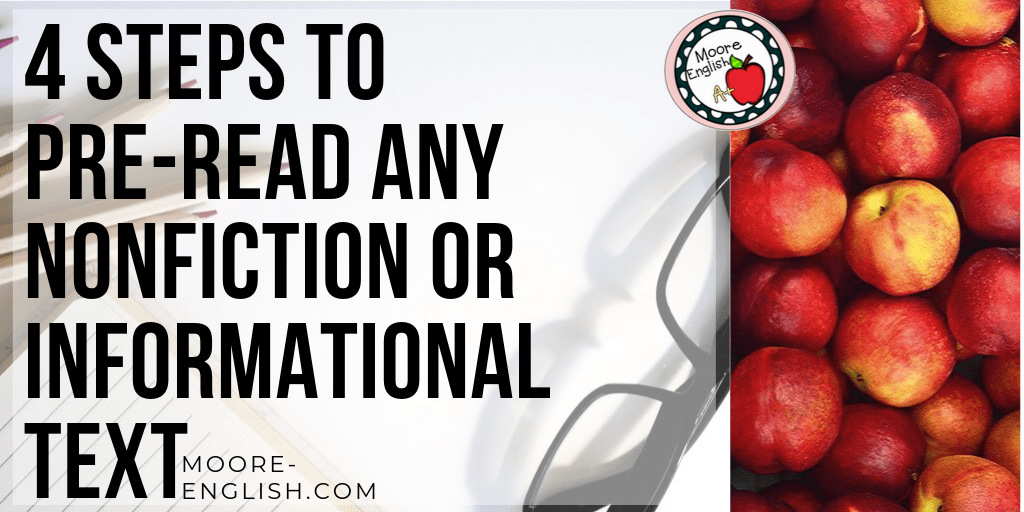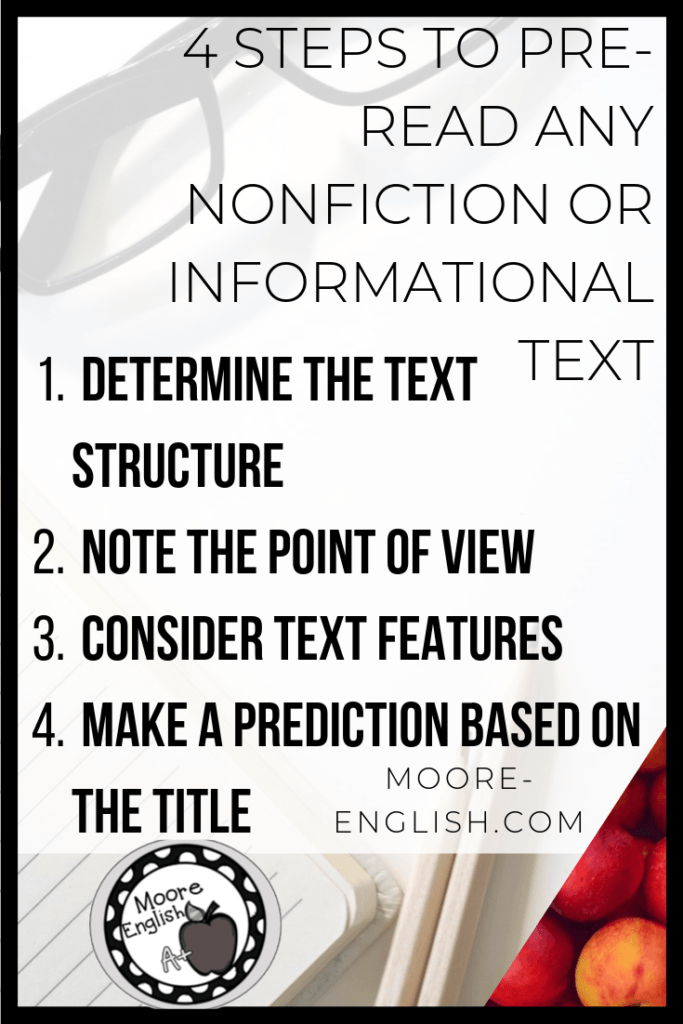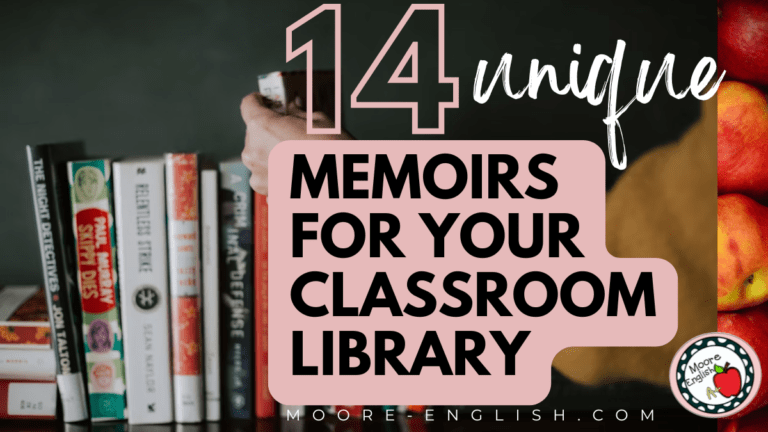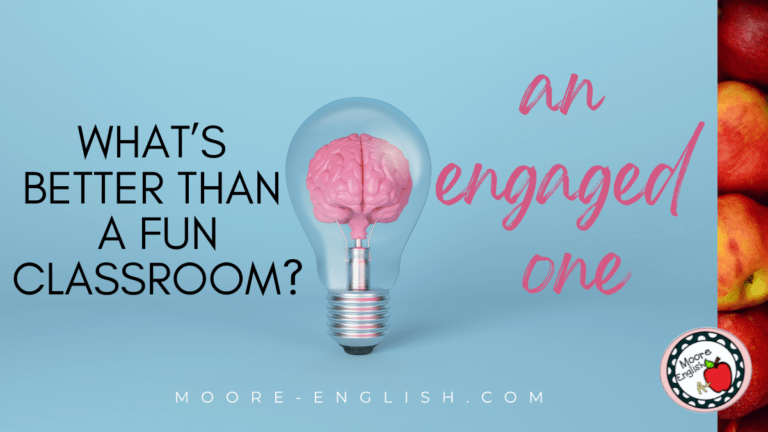I have a great system for helping students pre-read ANY poem. By the time students leave my classroom, I am confident that these steps set them up for success annotating poetry. Knowing that this system has been such a success for students, I wanted to develop a similar set of steps for students to annotate nonfiction and informational texts.

This post this post may contain affiliate links. Please read the Terms of Use.
Determine Nonfiction Structure
Diversity is a challenge inherent in nonfiction and informational texts. Students could read an essay, a newspaper article, a blog post, a speech, a transcript, a recipe, or a review. Since nonfiction and informational texts can come in so many forms, it’s helpful to start students off with a consideration of structure. What shape does the text take? Based on the structure, what might readers expect from the text? And what predictions might readers make about the purpose of a text based on its structure?
Additionally, when students determine structure, they can also begin to make the text knowable by numbering paragraphs or pages. This also helps students start on even ground so everyone is able to easily reference the text. The other advantage of numbering pages or paragraphs is that everyone can accomplish this task! This means everyone gets started with a small victory! Check out more ideas for teaching text structure here.
Note the Point of View
In fiction, point of view focuses on first, second, and third person. And that’s true in nonfiction, too. But in nonfiction and informational texts, it’s also important that students consider the source of information itself. Is the publisher or publication credible? What is its reputation?
Similarly, what can readers quickly determine about the writer? What are his or her biases? What are the writer’s credentials? And what makes the writer a credible source of information? Taken all together, these questions can help students better anticipate the author’s purpose.
Consider Nonfiction Text Features
The more I teach text features, the more convinced I become that they are an essential part of comprehension. Just this week my sophomores read two different pieces (“Credo” by Neil Gaiman and “The Economics of the New Jim Crow” from Inequality.org–both texts that I pair with To Kill a Mockingbird) that include essential text features.
Part of the challenge of text features is making sure students don’t gloss over important captions, graphs, maps, timelines, footnotes, and other visuals. For this reason, the third step in pre-reading a nonfiction or informational texts is to circle or note text features. Like text structure, text features give students an idea of where a text is going and how the writer may be about to unfold his or her purpose. Check out more ideas for teaching text features here.
Make a Prediction
Once students consider the structure, point of view, and text features, they are in a position to make some serious predictions about the text. In particular, I ask students to turn their attention to the title of the piece. Based on everything they have read, and based on the title, what can students predict about the piece? What do they expect to find as they read? Once students have made a prediction, they share with an elbow buddy, and then we begin to dig into the text.
Overall, these steps have helped my students better understand nonfiction and informational texts. I’ve put together all the best parts of this system in this product. One of the advantages of this system of pre-reading is that teachers can adapt and adjust to differentiate and meet the needs of diverse learners. Once you introduce this system to your students, let me know how it goes!












